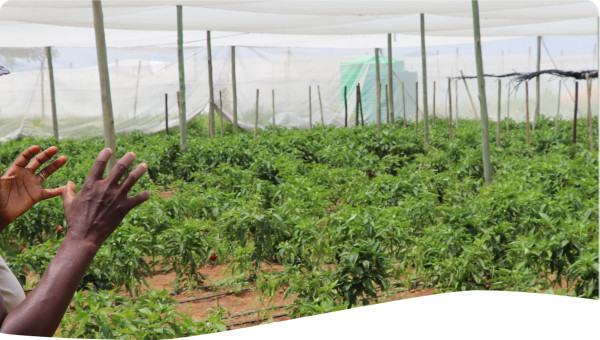In Kenya’s arid and semi-arid lands (ASALs), climate change and drought worsen poverty, conflict, and marginalisation. IMPACT leverages women’s groups in Isiolo, Samburu, Marsabit, and Laikipia to lead conservation and livelihood diversification. Through rangeland restoration, advocacy, alternative income options, and cultural leadership, women are empowered as custodians of land and climate resilience.
Kenya’s arid and semi-arid lands (ASALs) cover 80% of the country and are marked by climate variability, resource scarcity, and frequent droughts. Over the past century, Kenya has faced 28 significant droughts, four in the last decade. These conditions make ASALs highly vulnerable, trapping communities in cycles of poverty, insecurity, and marginalisation.
Pastoralism dominates in Isiolo, Samburu, Marsabit, and Laikipia, where 80% of the 2 million residents depend on livestock. Poverty levels are stark: the region has a 73.6% poverty index. Infrastructure gaps, illiteracy, and limited digital access isolate these communities, reducing opportunities for youth and women. Conflicts over land, water, and pasture further destabilise livelihoods, while patriarchal norms and harmful cultural practices undermine women’s rights.
The region’s mobility—families moving with livestock in search of pasture—also disrupts education for children, perpetuating cycles of disadvantage. Weak political influence and poor implementation of pastoralist-friendly policies compound the challenges, leaving communities exposed to climate risks and economic shocks.
Within this context, the Indigenous Movement for Peace Advancement and Conflict Transformation (IMPACT) works to strengthen leadership, promote environmentally sustainable practices, dismantle patriarchal barriers, and diversify livelihoods. Recognising women as custodians of land and holders of Indigenous ecological knowledge, IMPACT supports women-led conservation and social transformation in Northern Kenya.
IMPACT’s strategy combines conservation, empowerment, and alternative livelihoods. Key interventions include:
1. Rangeland restoration
- Women’s groups rehabilitate degraded land using semi-circular bunds (“earth smiles”) that capture rainwater and enable regrowth of grasses like Cencilirais cilirias and Eragrostis superba.
- Grass seeds are harvested, stored in community seed banks, and sold locally during dry seasons.
- Women also plant Indigenous trees, such as olive, which hold cultural and spiritual value.
2. Knowledge sharing and socialisation
- Women integrate conservation into songs, dances, and storytelling in local languages, teaching children and communities about tree preservation and sustainable practices.
- Exchanges, like between the Opiroi women and Twala Tenebo group, spread techniques for grass seed harvesting, creating strong peer learning networks.
3. Land governance and rights
- Under Kenya’s Community Land Act (2016), women are represented on Community Land Management Committees (CLMCs).
- This inclusion enables women to influence land use, grazing plans, and resource management, curbing destructive practices like charcoal burning and sand harvesting.
4. Livelihood diversification
- Women pursue poultry farming in Samburu, where drought has devastated pastoralism. Supported by training from county livestock agents and consultants, poultry provides food security and income.
- Beekeeping initiatives train women in branding, marketing, and using solar-powered devices to sell honey products digitally. Proceeds fund emergency needs, reducing reliance on donor aid.
- Household-level vegetable gardens improve nutrition and food security.
5. Advocacy and leadership
- IMPACT fosters women’s leadership in dismantling harmful norms and amplifying their voices in governance.
- Women leaders—such as Rosemary Nenini (Twala Cultural Centre), Jane Sarioyo (Naatum women’s group), and Elizabeth Nasipa (Namaiyana women’s group)—manage cultural centres, eco-tourism initiatives, and self-help groups that combine conservation with poverty reduction, gender equality, and education support.
The initiative has produced tangible environmental, social, and economic outcomes:
1. Environmental restoration
- Semi-circular bunds have rehabilitated degraded land, making it productive for grazing and farming.
- Grass seed banks increase drought resilience, while Indigenous tree planting reduces deforestation.
- Women-led awareness campaigns safeguard sacred trees like Reteti and Olgaboli.
2. Women’s empowerment
- Women are now central actors in conservation, leading rangeland restoration, land governance, and advocacy.
- Representation in CLMCs ensures women’s perspectives influence community land-use plans and natural resource management.
- Cultural practices like songs and ceremonies reinforce women’s roles as educators and custodians.
3. Strengthened social capital
- Exchange visits between groups spread innovation and built solidarity. Opiroi women, after learning from Twala Tenebo, returned as advocates for sustainable practices and gender equality.
- Networks of women’s groups now act as catalysts for conservation and cohesion in drought-prone areas.
4. Economic diversification
- Poultry farming and beekeeping give women reliable incomes where pastoralism is under threat.
- Honey marketing through solar-powered digital tools provides sustainable revenue and reduces donor dependency.
- Vegetable cultivation enhances household nutrition and food resilience.
5. Cultural transformation
- Women’s groups use their cultural centres to reject harmful practices such as FGM, early marriage, and denial of education.
- At the same time, they preserve positive traditions through eco-tourism, cultural exchange, and sustainable enterprises, linking conservation with identity and pride.
6. Champions and leadership
- Women leaders like Nenini, Sarioyo, and Nasipa showcase how grassroots women can manage cooperatives, cultural centres, and eco-enterprises, combining conservation with empowerment.
- Revenues from cultural tourism, eco-manyattas, and women’s enterprises support education, poverty reduction, and sustainable development.
Overall impact
IMPACT has demonstrated that women-led conservation in ASALs is both viable and transformative. By blending Indigenous knowledge, community networks, and modern livelihood strategies, women are strengthening environmental resilience, advancing gender equality, and reducing poverty in Northern Kenya.
Women’s groups are powerful vehicles for conservation and social change. Their knowledge, networks, and cultural authority make them effective leaders in restoring degraded rangelands.
Diversifying livelihoods through poultry, beekeeping, and eco-tourism reduces dependence on pastoralism and strengthens household resilience to drought and conflict.
Embedding women in land governance structures like CLMCs ensures inclusivity, sustainability, and long-term resource stewardship.
Cultural practices such as songs, dances, and ceremonies are effective tools for spreading conservation knowledge and transforming norms.
Peer-to-peer exchanges between women’s groups accelerate innovation, replication, and the scaling of conservation practices across regions.

